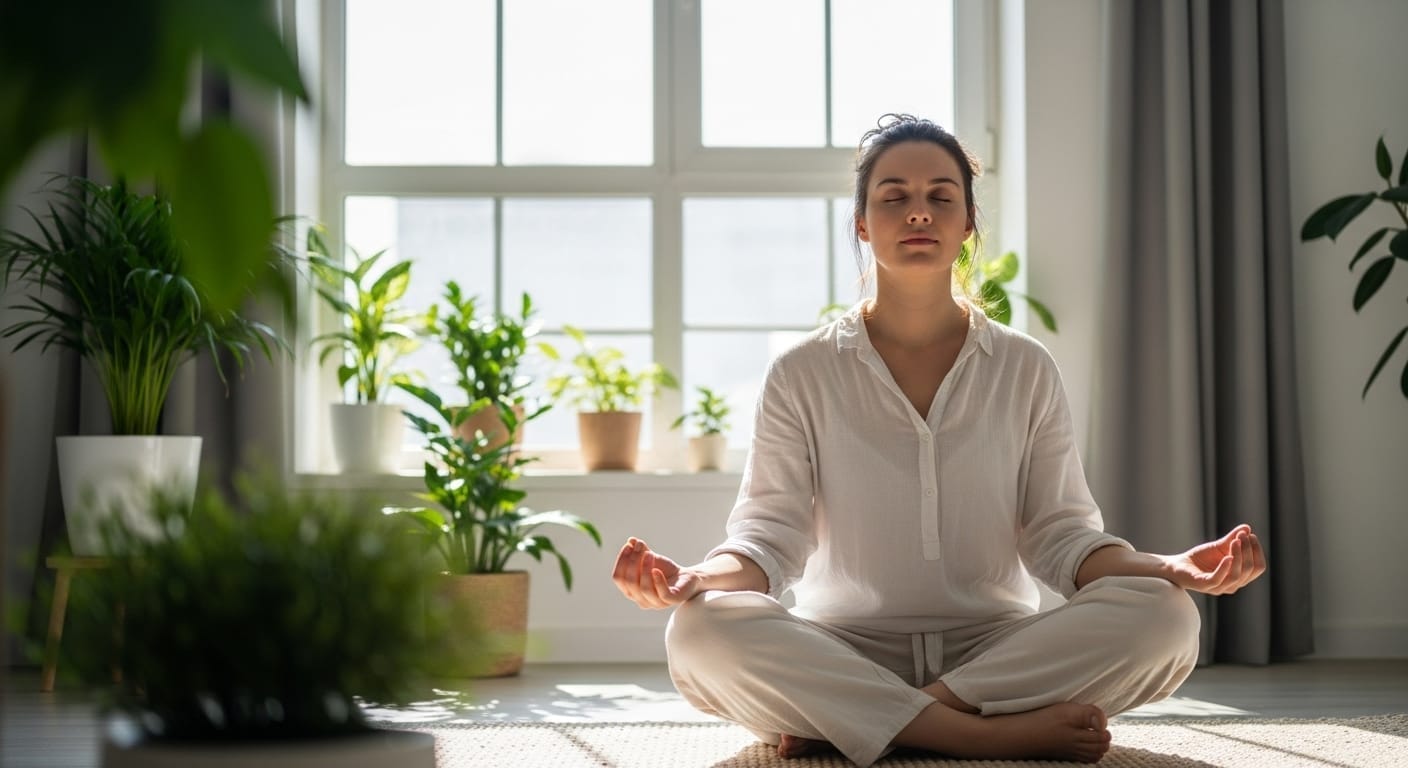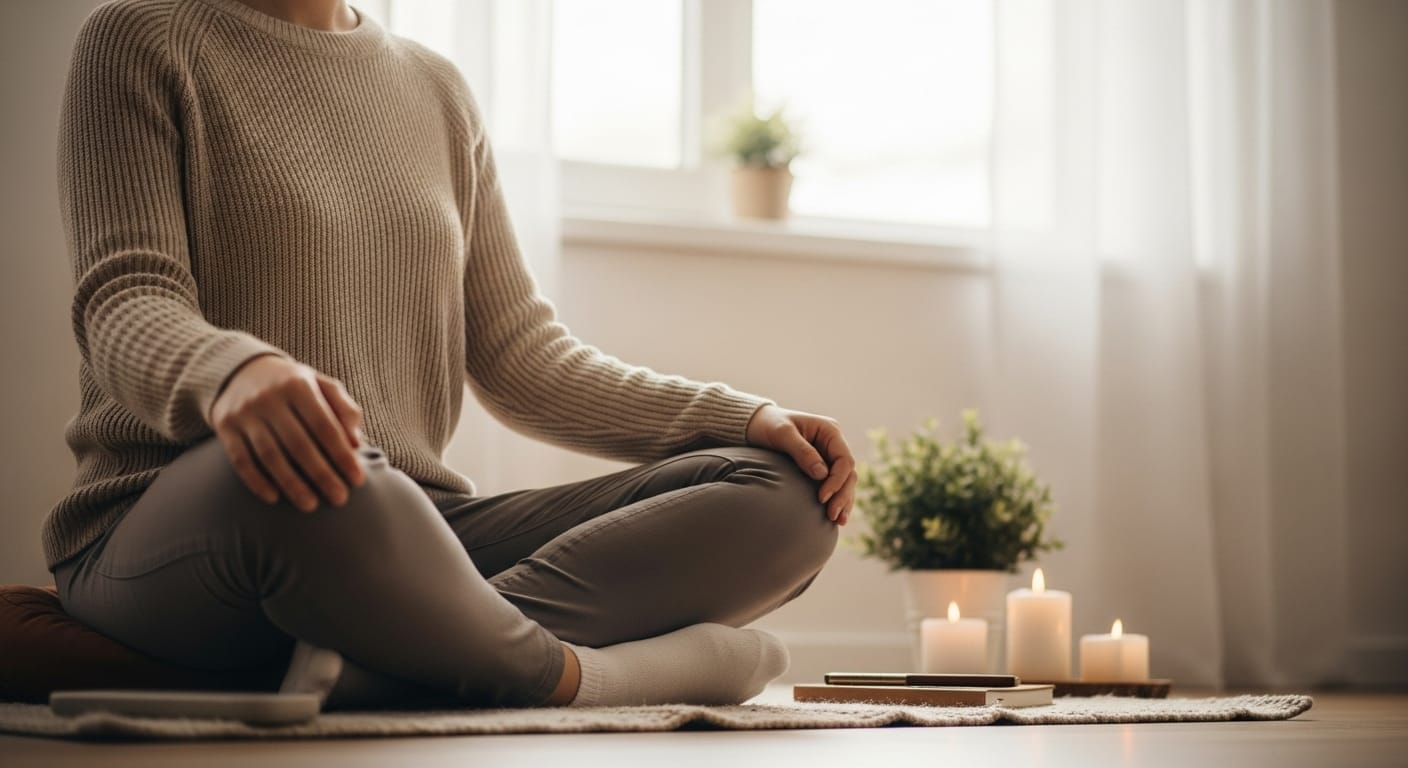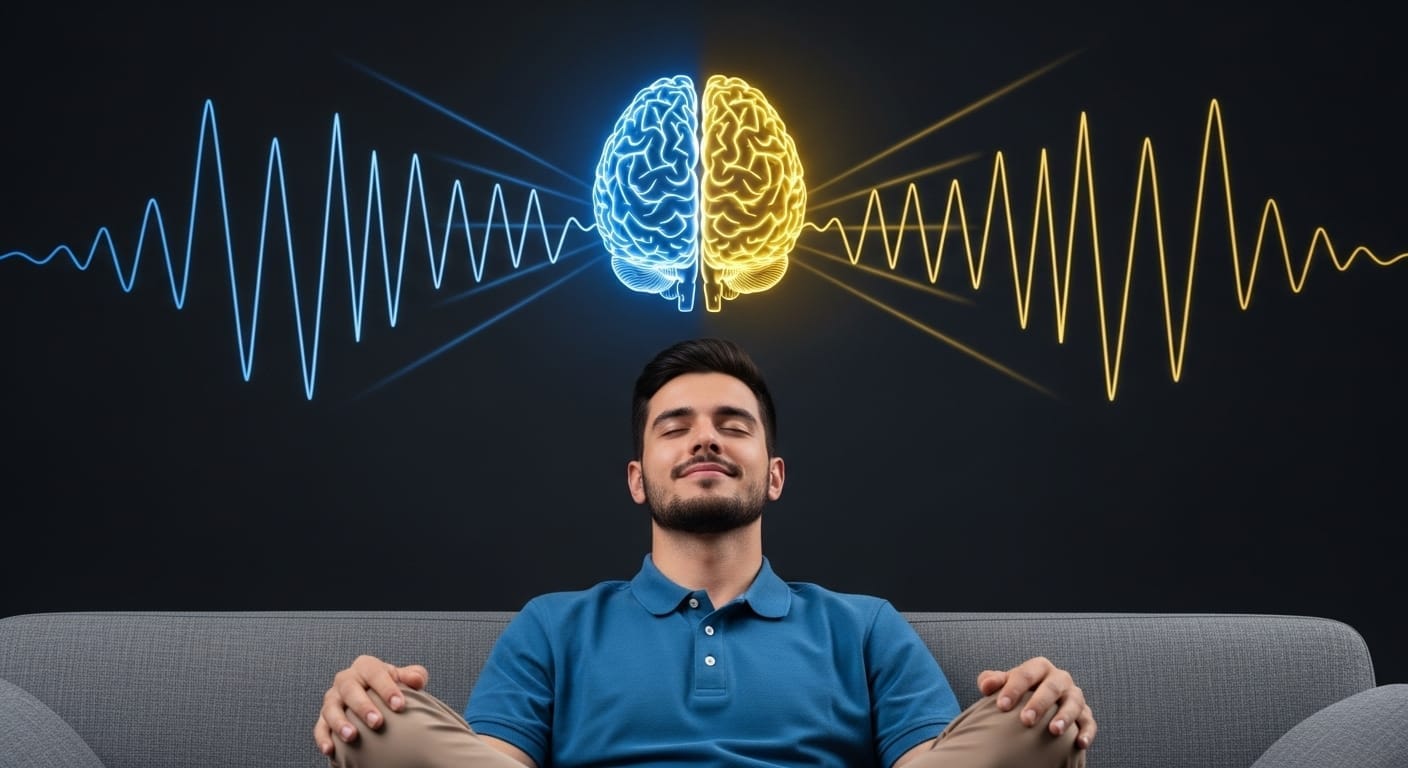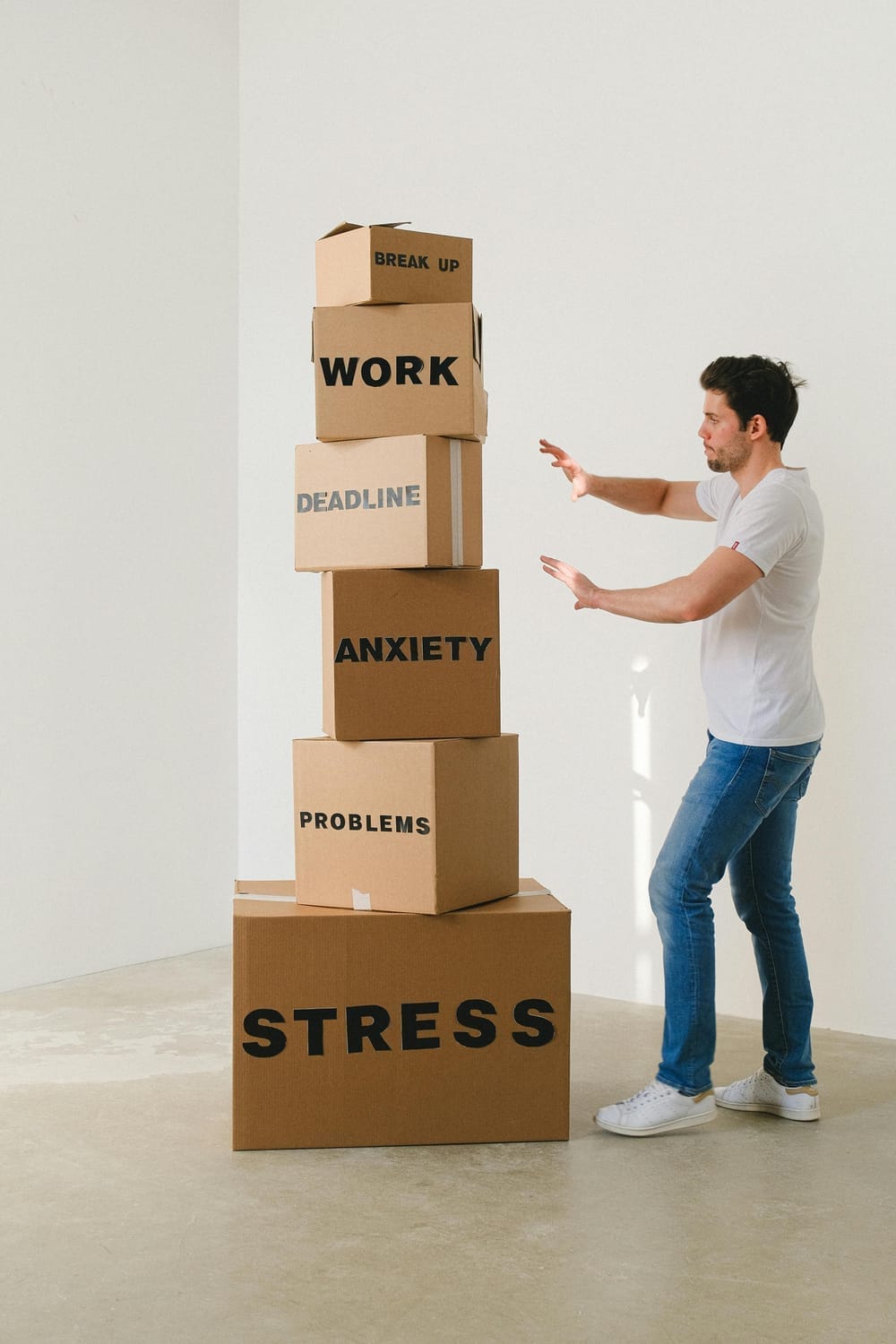

Mindful
Meditation
Unlocked
"Quiet the Mind. Unlock the
Present. Discover Mindfulness
That Transforms."
Mastering Mindfulness and Meditation: A Guide to Inner Calm
You live in a world filled with distractions, making it harder than ever to keep inner calm. Learning mindfulness practices can help you find peace in the chaos. It allows you to anchor yourself to the present moment rather than being swept away by outside noise.
Adding meditation techniques to your day can greatly improve your mental health. It makes you more aware of your thoughts, emotions, and bodily sensations. This increased awareness helps you handle tough situations with more resilience and clarity, creating a powerful foundation for overall well-being.
Discover the benefits of mindfulness and meditation in achieving inner calm.
Learn simple techniques to incorporate mindfulness into your daily life.
Understand the significance of regular meditation practice for mental well-being.
Explore how mindfulness can improve your response to challenging situations.
Find out how to cultivate a sense of serenity amidst chaos.
Understanding the Foundations of Mindfulness and Meditation

Mindfulness and meditation stem from ancient traditions but are incredibly relevant today. They offer practical tools for modern challenges such as stress, anxiety, and burnout. Truly understanding their core principles is key to gaining the full benefits they offer.
Defining Mindfulness in the Modern Context
In today's fast-paced world, mindfulness means being fully present and aware in the current moment. It’s about observing your thoughts, emotions, and bodily sensations without judgment. Rather than reacting impulsively, mindfulness allows you to pause, reflect, and respond with intention.
Practicing mindfulness regularly can significantly lower stress levels, sharpen mental clarity, and create a greater sense of emotional balance. Even short moments of mindful awareness throughout the day — like noticing your breath during a meeting — can add up to meaningful improvements in your mental health.
The Historical Roots of Meditation Practices
Meditation has been practiced for thousands of years, rooted in ancient spiritual and philosophical traditions. From the Buddhist Vipassana methods to Hindu Transcendental Meditation, these practices were originally used for personal transformation, cultivating awareness, and attaining inner peace.
While the spiritual aspects are respected, modern meditation often focuses on practical benefits like stress relief, emotional regulation, and improved concentration. Understanding meditation’s rich history helps you appreciate the depth behind this simple yet powerful practice.
The Relationship Between Mindfulness and Meditation
Mindfulness and meditation are deeply intertwined but distinct. Mindfulness is the act of being fully aware of the present moment, while meditation often involves intentionally focusing the mind — sometimes on a breath, mantra, or visualization.
Mindfulness meditation bridges these two ideas by using meditation as a way to strengthen your present-moment awareness. Over time, practicing mindfulness meditation can help you stay centered during daily life, not just while sitting quietly.
| Practice | Focus | Benefits |
|---|---|---|
| Mindfulness | Present moment awareness | Reduces stress, improves mental clarity |
| Meditation | Focused attention on an object or mantra | Enhances self-awareness, promotes relaxation |
| Mindfulness Meditation | Cultivating awareness through meditation | Improves focus, reduces anxiety |
The Science-Backed Benefits of Regular Practice
Modern science has extensively studied mindfulness and meditation, confirming what ancient practitioners long knew: these practices can profoundly improve both physical and mental health.
Physical Health Improvements
Mindfulness and meditation have measurable benefits for your physical body. Studies show they can help lower blood pressure, reduce chronic pain, and even enhance immune function.
Stress Reduction and Immune Function
Chronic stress floods the body with hormones like cortisol, which can weaken the immune system over time. Regular mindfulness practice lowers cortisol levels, helping the body maintain balance. Meditation has also been shown to boost the production of antibodies, fortifying your immune defenses.
Impact on Sleep Quality and Pain Management
Sleep issues and chronic pain often go hand in hand with high stress. Meditation techniques, especially body scans and progressive muscle relaxation, calm the nervous system, making it easier to fall and stay asleep. These practices also change your brain’s perception of pain, reducing its intensity without needing medication.
Mental and Emotional Wellbeing Enhancements
Mindfulness and meditation are great for your mind and feelings. They help lower anxiety and depression. They also improve how you handle emotions and stay strong.
Anxiety and Depression Reduction
Clinical studies show that regular mindfulness meditation can significantly reduce symptoms of anxiety and depression. Mindfulness trains your mind to observe negative thoughts without getting caught in them, creating space to respond rather than to react.
Emotional Regulation and Resilience
Mindfulness improves emotional regulation by making you more aware of emotional triggers before they escalate. Over time, this builds resilience — allowing you to bounce back from stress or setbacks more easily.
Cognitive Function and Productivity Benefits
A regular meditation practice doesn't just make you feel calmer — it also boosts brain function. Mindfulness improves working memory, mental clarity, and focus. This heightened mental performance translates into better decision-making, increased creativity, and improved productivity at work and in everyday life.
Essential Mindfulness and Meditation Techniques and Practices
Exploring different mindfulness and meditation techniques can help you find methods that resonate with your needs.
Breath-Focused Meditation Techniques
Breath-focused meditation is a foundational technique that anchors your mind to the present.
Counting Breaths Method
In this simple yet powerful method, you silently count your breaths — one on the inhale, two on the exhale, up to ten, and then repeat. Counting breaths helps tame racing thoughts and strengthens focus.
Following the Breath Technique
Rather than counting, you simply observe the natural rhythm of your breath. Notice its pace, depth, and sensation. This mindful observation connects you deeply to the present moment.
Body Scan and Progressive Relaxation
The body scan involves moving your attention slowly through different parts of the body, from your toes to your head. With each exhale, you release tension. Progressive relaxation combines this with consciously tensing and relaxing each muscle group, promoting deep physical and mental relaxation.
Loving-Kindness and Compassion Practices
Loving-kindness meditation focuses on generating feelings of compassion — first toward yourself, then toward others. This practice enhances emotional well-being and improves relationships by fostering empathy and goodwill.
| Technique | Primary Benefit | Secondary Benefit |
|---|---|---|
| Breath-Focused Meditation | Improves concentration | Reduces stress |
| Body Scan | Relaxes the body | Enhances body awareness |
| Loving-Kindness Meditation | Fosters compassion | Improves emotional wellbeing |
Getting Started: A Beginner's Approach to Meditation

Starting your meditation journey is more than just sitting quietly. It needs a thoughtful approach to create a lasting practice. As a beginner, understanding the foundational elements is key to your meditation practice.
Creating Your Meditation Space
Designate a calm, uncluttered area for meditation. You don't need anything elaborate — a simple cushion, a small mat, or a favorite chair in a quiet corner can work wonders. Adding calming touches like soft lighting, a candle, or a plant can make the space more inviting.
Establishing a Sustainable Practice Schedule
Consistency is key to developing a meditation habit. Choose a schedule that fits your life and stick to it.
Morning vs. Evening Practice
Morning meditation can ground you and set a positive tone for the day ahead. Evening meditation, on the other hand, helps you unwind, reflect, and release the day's stresses. Experiment to find what suits you best.
Duration and Frequency Recommendations
Start small with 5-10 minutes per session. As you get comfortable, gradually increase the time. Even short, regular practice is far more effective than occasional long sessions.
Essential Equipment and Props for Comfort
While meditation doesn't need much equipment, a few props can help. Consider a meditation cushion, a blanket for warmth, or calming candles. Some find guided meditation recordings helpful for beginner meditation techniques and mindfulness exercises.
By setting up your meditation space, establishing a consistent schedule, and using comfortable equipment, you'll start a rewarding meditation practice.
Guided Meditation: When and How to Use It
Guided meditations — where an instructor leads you through a session — can be especially helpful when starting out or when you need extra support.
Benefits of Guided vs. Self-Directed Practice
Guided meditation is very helpful for beginners. It gives you a clear structure to follow, keeping your mind focused. Some key advantages include:
Reduced mind-wandering: The guide keeps your thoughts on track.
Increased motivation: Engaging stories or instructions can encourage regular practice.
Learning new techniques: Guides can teach you different meditation methods.
Allows you to tune into your own rhythm and needs once you become more confident.
Finding Quality Guided Meditations
Finding good guided meditations is important. You can look at:
Apps and online platforms: Apps like Headspace and Calm have great meditations.
YouTube and podcasts: Many free meditations are available on YouTube and podcasts.
Meditation retreats and workshops: Getting guidance in person can be very helpful.
Creating Your Own Guided Scripts
Once you get used to guided meditation, you might want to make your own scripts. This lets you customize your practice to fit your needs. When making your own scripts, think about:
Your goals: What do you hope to achieve with meditation?
Your tone and pace: Try different tones and speeds to see what works for you.
Recording yourself: Use a voice recorder or app to record your meditation.
Mindfulness Exercises for Everyday Life

You can find calm and clarity by adding mindfulness to your daily life. Mindfulness isn't just for meditation. It can make everyday tasks a chance to grow and learn more about yourself.
Mindful Eating Practices
Eating mindfully involves slowing down and paying full attention to each bite. Notice textures, flavors, and smells. Listen to your body’s hunger and fullness signals. This practice enhances digestion, prevents overeating, and deepens gratitude for your meals.
Walking Meditation Techniques
Turn your daily walk into a meditation. Walk slowly and deliberately, focusing on the sensation of your feet connecting with the ground. Whenever your mind wanders, gently return your attention to your steps and breath. Walking meditation is an easy way to practice mindfulness while staying active.
Integrating Mindfulness into Work and Relationships
Mindfulness can make you better at work and in relationships. Being present and attentive helps you communicate better and handle tough situations wisely.
Mindful Communication Strategies
Practice active listening by truly focusing on the speaker without formulating your response. Pause before replying. Stay present during conversations. Mindful communication strengthens empathy, reduces conflict, and enhances relationships.
Brief Mindfulness Breaks During Work
Incorporate short breaks — just a minute or two — where you close your eyes, take three deep breaths, and notice how you feel. These micro-mindfulness moments can recharge your focus and reduce accumulated stress during busy days.
Overcoming Common Challenges in Meditation Practice
Starting a meditation habit can be tough. Many people face common hurdles. It's key to know and tackle these issues to grow in your practice.
Dealing with Wandering Thoughts
Your mind will wander — it’s natural. The key is to notice when it happens without judgment and gently guide your attention back to your chosen point of focus. Over time, this "mental rep" strengthens your ability to concentrate.
Finding Time in a Busy Schedule
Even on the busiest days, you can weave mindfulness into your life. Meditate during lunch breaks, after your morning coffee, or before bed. Even a few mindful breaths between meetings count.
Managing Physical Discomfort During Meditation
Try different sitting positions and use props to make your meditation better.
Physical issues can stop you from meditating. Make sure you're comfy and use the right meditation practices and techniques. Sitting or lying down can help. Taking breaks is also important.
Tracking Progress and Deepening Your Practice
As you keep going on your mindfulness and meditation path, it's key to track your progress. This helps you stay motivated and fine-tune your practice when needed.
To effectively track your progress, consider the following methods:
Journaling and Self-Reflection Methods
Journaling is a strong tool for reflecting on your mindfulness and meditation practice. By jotting down your thoughts, feelings, and insights, you can spot patterns and areas to work on. Regular self-reflection lets you see how your practice affects your everyday life.
Record your meditation sessions and note any observations.
Reflect on your experiences and emotions.
Identify areas where you'd like to improve or focus more.
Using Technology to Monitor Meditation Effects
There are many apps and digital tools out there to help you track your meditation practice. These tools offer features like session logging, mood tracking, and personalized insights. Using technology can enhance your practice by giving you a clear view of your progress.
Setting Realistic Goals and Milestones
Setting achievable goals is vital for keeping motivation and deepening your mindfulness practice. By setting clear milestones, you can measure your progress and celebrate your wins. Be realistic about what you can achieve and adjust your goals as needed.
Set specific, achievable goals for your practice.
Celebrate your successes along the way.
Adjust your goals as your practice evolves.
By using these methods in your mindfulness and meditation practice, you can better understand your progress. This way, you can keep growing in your journey towards inner calm.
Advanced Mindfulness and Meditation Techniques for Experienced Practitioners
For those who have been practicing mindfulness and meditation for a while, there are advanced techniques to explore. These methods are designed for those who want to deepen their practice. They can help you find more inner peace and mental clarity.
Vipassana and Insight Meditation
Vipassana meditation helps you see the true nature of reality. It teaches you to notice how everything changes. This understanding can make you less stressed and anxious.
Zen and Mindfulness of Mind
Zen meditation, or Zazen, focuses on being mindful of your thoughts. It involves sitting quietly, focusing on your breath, and watching your thoughts without getting caught up in them. This practice makes your mind clearer and more focused.
Transcendental and Mantra-Based Approaches
Transcendental meditation uses a special word, or mantra, to calm your mind. It helps you reach a deeper state of consciousness. This simple yet powerful technique can reduce stress and help you relax.
| Technique | Focus | Benefits |
|---|---|---|
| Vipassana | Insight into reality | Reduces stress and anxiety |
| Zen | Mindfulness of mind | Improves mental clarity |
| Transcendental | Mantra-based | Promotes deep relaxation |
Conclusion: Your Journey to Inner Calm Through Mindfulness
Mastering mindfulness and meditation is a lifelong journey toward inner calm and clarity. Whether you’re just starting or have practiced for years, these techniques can deeply enrich your emotional, mental, and physical well-being.
Adding simple practices — like breath awareness, body scans, or mindful communication — can transform your day-to-day experience. Even amid life's inevitable chaos, mindfulness offers a way to find stillness and strength from within.
Consistency, patience, and compassion toward yourself are the real keys to lasting growth. As you walk this path, you’ll not only improve your own life but also ripple peace and positivity outward to those around you.
FAQ
What is mindfulness and how does it differ from meditation?
Mindfulness is about being fully present in the moment. It uses techniques like deep breathing and noticing your thoughts and feelings. Meditation is a way to practice mindfulness, focusing your attention and awareness.
While they're often together, mindfulness can be part of daily life. Meditation is usually a dedicated practice.
How do I start a meditation practice as a beginner?
Start by finding a quiet, comfy spot. Begin with short sessions, like 5-10 minutes. As you get used to it, you can make them longer.
Guided recordings or apps like Headspace or Calm can help you begin.
What are some common challenges faced by meditators, and how can they be overcome?
Challenges include dealing with distracting thoughts, finding time, and physical discomfort. To beat these, try mindfulness in daily tasks, schedule meditation, and use comfy cushions or chairs.
Can mindfulness and meditation be practiced together, and what are the benefits?
Yes, you can do both together. They help reduce stress, improve mood, and boost thinking skills. They help you feel more aware and calm every day.
How can I track my progress in meditation and mindfulness practices?
Keep a journal of your experiences. Use apps or tech to track your practice. Set goals and reflect on your progress regularly.
What are some advanced mindfulness and meditation techniques for experienced practitioners?
For advanced, try Vipassana, Zen, or transcendental meditation. These deepen your self-awareness and inner peace.
How can I incorporate mindfulness into my daily life?
Practice mindful eating and walking meditation. Use mindfulness at work and in relationships. Brief mindfulness breaks can also help.
What are the benefits of guided meditation compared to self-directed practice?
Guided meditation offers structure and support, great for beginners. It helps you focus and build specific skills. Self-directed practice lets you be more flexible and independent in your practice.
Stay Mindful
Get updates & free mental wellness tips.
Hi 👋
Hope you are doing okay, Just want to let you know,
Some links on this site are affiliate links. We may earn a small commission if you make a purchase — at no extra cost to you.
Understand Your Mind.
Try our quick quizzes to learn more about your mental health.
Check these out









